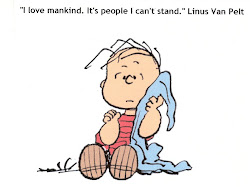
Friday, July 22, 2011
Baseball in the Neighborhood
When my family moved to suburban Philadelphia in the late 1950s, all my new-found friends were baseball fans. We played stickball in the street on summer nights until it was too dark to see the ball. We all collected baseball cards, some were more serious collectors than others. One neighborhood friend a few houses away was a walking statistics bank, rattling off players' ERAs and RBIs from his brain like he was reading them off of a open page in front of him.
I was a jonny-come-lately to baseball since previous to this family move we had lived in the southern part of the Shenandoah Valley – not exactly close to any major league team. Among my friends in Lexington, VA, collecting and shooting marbles was a bigger sport that collecting and flipping baseball cards (Anybody remember baseball card “flipping?” I recall two versions, flipping the cards against a hard wall and standing straight up and each player dropping one in turn trying to cover the previous card).
My new Philadelphia friends informed me that a famous Phillies pitcher lived near by, Robin Roberts. I confess that informed bit of data absolutely did not impress me at the time, but recently I’ve researched Roberts.
Robin Evan Roberts (September 30, 1926 – May 6, 2010) pitched primarily for the Philadelphia Phillies (1948–61), but spent the latter part of his career with the Baltimore Orioles (1962–65), Houston Astros (1965–66), and finally the Chicago Cubs (1966).
Roberts made his major league debut on June 18, 1948, and in 1950 he led his Phillies—whose overall youth earned them the nickname the Whiz Kids—to their first National League pennant in 35 years. Roberts started three games in the last five days of the season, defeating the heavily favored Brooklyn Dodgers at Ebbets Field, in a pennant-deciding, 10-inning game. This marked his 20th victory of the season and Roberts became the Phillies' first 20-game-winner since Grover Cleveland Alexander in 1917.
Between 1950 and 1955 Roberts won 20 games each season, leading the NL in victories from 1952 to 1955. Six times he led the league in games started, five times in complete games and innings pitched, and once pitched 28 complete games in a row. During his career, Roberts never walked more than 77 batters in any regular season. In addition, he helped himself as a fielder as well as with his bat, hitting 55 doubles, 10 triples, and five home runs with 103 RBI.
His 28 wins in 1952, the year he won The Sporting News Player of the Year Award, were the most in the National League since 1935, the year Dizzy Dean also won 28 games.
One of the most memorable highlights of his career occurred on May 13, 1954, when Roberts gave up a lead-off home run to Cincinnati Reds (then known as the "Redlegs") player Bobby Adams and then retired 27 consecutive batters to win 8–1, on a one-hit game.
But the most impressive statistic I found was a bit of trivia: Roberts was the only pitcher in major league history to defeat the Boston Braves, the Milwaukee Braves, and the Atlanta Braves.
That’s cool. Now I wish I had been interested enough as a kid to seek out Roberts’ home and ask him for his autograph.
Roberts was inducted into the Hall of Fame in 1976.
Subscribe to:
Post Comments (Atom)

1 comment:
Baseball players peak ages 26-28, generally, so at first glance it looks like he bloomed a bit earlier. A closer examination shows that he was better after being player of the year, but the Phillies were progressively worse.
He defines solidity in a pitcher. His only weakness was giving up home runs.
Post a Comment